In the field. On the trail. In the river. Up the mountain. Across the sea.
Whether you’re an amateur naturalist or conservation scientist, we all like to get outside. Preferably to multiple outsides across the world, where we can traipse through the forest searching for rare birds or search the trees by spotlight for rare marsupials.
As science reporters for Cool Green Science, we try to get into the field as much as possible. We want to bring you science as it’s happening, tips and tricks for field reporting, and epic fieldwork fails.
But we can’t be on the road — or trail — constantly. So when we’re not living out of a suitcase and subsisting on gas-station pop tarts, we read about travel instead. The best nature and travel writing is almost as good as being there yourself — almost. So read on for our literary list of essential reading for the restless nature-lover, and leave your own suggestions in the comments.
-
Throwim’ Way Leg: Tree-Kangaroos, Possums, and Penis Gourds
Tim Flannery

Throwim’ way leg — it’s a New Guinea pidgin phrase that means “to take the first step on a long journey.” In this fantastic read, legendary mammalogist, traveler, and science activist Tim Flannery recounts his years of fieldwork studying rare New Guinea mammals in the 1980s. I first read this book only days after I’d finished my own fieldwork journey through Papua New Guinea, and it’s been my absolute favorite travel read ever since.
From the betel-nut juice spray he mistakes for blood (buai impressionism) to the multiple near-death experiences in small aircraft, Flannery’s ability to capture the small, universal details of both Melanesia and tropical fieldwork is unrivaled. And he does it in such away that you’ll be crying with laughter the whole way through.
And if you just can’t get enough of Papua New Guinea after reading this book, try Kira Salak’s Four Corners. While it’s more of a personal narrative than conservation story, it’s a fantastic read.
-
How to Clone a Mammoth: The Science of De-Extinction
Beth Shapiro

I suspect I’m not the only naturalist who considers the ultimate dream to be seeing a live mammoth roaming the steppe. Of course, that’s a fantasy. Or is it? Beth Shapiro journeys to both the past and the future to look at what it would really take to clone a mammoth or other extinct creature.
I’ve read a lot of books on this topic, and hype abounds. Not here. This book is clear-headed, skeptical, grounded in science. Shapiro is an evolutionary biologist and a pioneer in the field of ancient DNA; she’s involved in the effort to clone the passenger pigeon. The travel narratives, set in Siberia, are excellent. Shapiro walks the reader through the steps involved, from collecting and extracting DNA to replicating an extinct species. She also explains the very real conservation and ethical dilemmas presented. Few books present complicated issues so well: science writing at its best.
-
The Snow Leopard
Peter Matthiessen
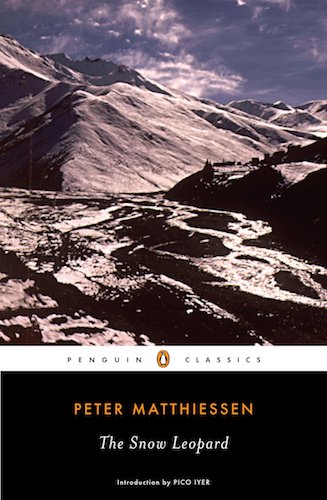
CIA Agent. Award-winning writer. Buddhist priest. Inveterate traveler. Peter Matthiessen is a legend among both nature and fiction writers, and The Snow Leopard is one of his best-known works.
The book chronicles Matthiessen’s two-month trek into Himalayas with legendary field biologist George Schaller as they search for the elusive big cat and its prey, the Himalayan blue sheep. Fieldwork aside, the journey is also very much so a spiritual quest. Matthiessen has recently lost his wife to cancer, and spends much of his journey — and prose — meditating on grief and healing after loss. Only one of the pair sees the leopard in the end. But, unsurprisingly, the journey itself is the reward.
For two other great naturalist reads from Asia and Tibet, check out Tibet Wild by George Schaller and Beyond the Last Village by Alan Rabinowitz.
-
Cry of the Kalahari
Mark Owens, Delia Owens

Mark and Delia Owens had no doctorates, grants or backing from conservation organizations, but they had a strong desire to conduct wildlife research in Africa. They worked jobs and eventually auctioned off nearly all their possessions from the back of their truck, and used the proceeds to fly to Johannesburg. Ill prepared? Perhaps. But by the end of the book, you’ll envy them their adventure. The Owens lived in the remote Kalahari for seven years, studying lion and brown hyena interactions and antelope migrations. They encountered animals that had never seen humans; it was not uncommon for them to wake up to find curious lions in their tent. Cry of the Kalahari contains fascinating wildlife research and a strong plea for conservation, but it’s the rip-roaring storytelling that will keep you turning pages.
-
Searching for Pekpek: Cassowaries and Conservation in the New Guinea Rainforest
Andrew L. Mack
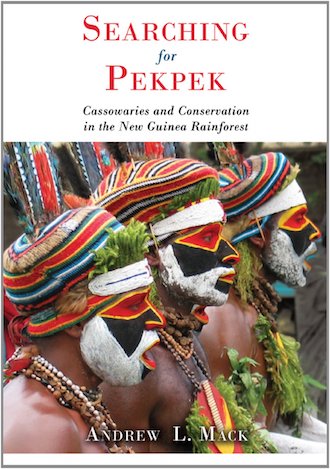
Searching for Pekpek is the first-person account of Andrew Mack’s quest to study the role of cassowaries as seed dispersers in New Guinea forests. Which, in reality, means a lot of time spent traipsing through the forest looking for cassowary poop, or pekpek.
He and his research partner Debra Wright built a research station, by hand, in the PNG highlands in 1987 and lived there on and off for several years. There must be something about New Guinea that inspires hilarity, because Mack’s account is full self-deprecating humor, including the hilarious antics of their captive cassowaries, Huey and Louie.
But it’s also a tale of hardship, as their hopes for building a flourishing research community are destroyed, both by organizational politics and in-country corruption. Mack’s lengthy digressions on the travesty of fly-in-fly-out conservation — though a worthy topic — occasionally hijack the narrative. But all things considered, this book is (yet another) humorous and true-to-life account of the challenges of fieldwork and long-term conservation in Melanesia.
And really, how can you resist cassowaries.
-
Among the Bone Eaters: Encounters with Hyenas in Harar
Marcus Baynes-Rock
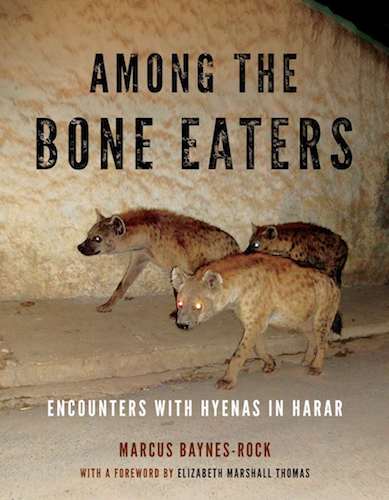
When you imagine books about wildlife field research, your mind goes to deep rainforests, Tibetan plateaus, endless wilderness. The settings for classics reviewed here like Cry of the Kalahari and Throwim’ Way Leg.
Among the Bone Eaters is different. It’s set in the urban environment of Harar, Ethiopia, where spotted hyenas and humans live side by side. People welcome the hyenas and believe they protect them from evil spirits, and hyena feeding has become a local tourist attraction.
Marcus Baynes-Rock gains the trust of a hyena clan, who allow him to follow them through the streets, feeding on dead livestock, negotiating city streets, avoiding domestic dogs and living wild lives in a human-dominated environment. It’s a fascinating book on the relationship between humans and wild animals in the Anthropocene, but also one that challenges our conceptions about wildness and wild places.
-
Desert Solitaire: A Season in the Wilderness
Edward Abbey
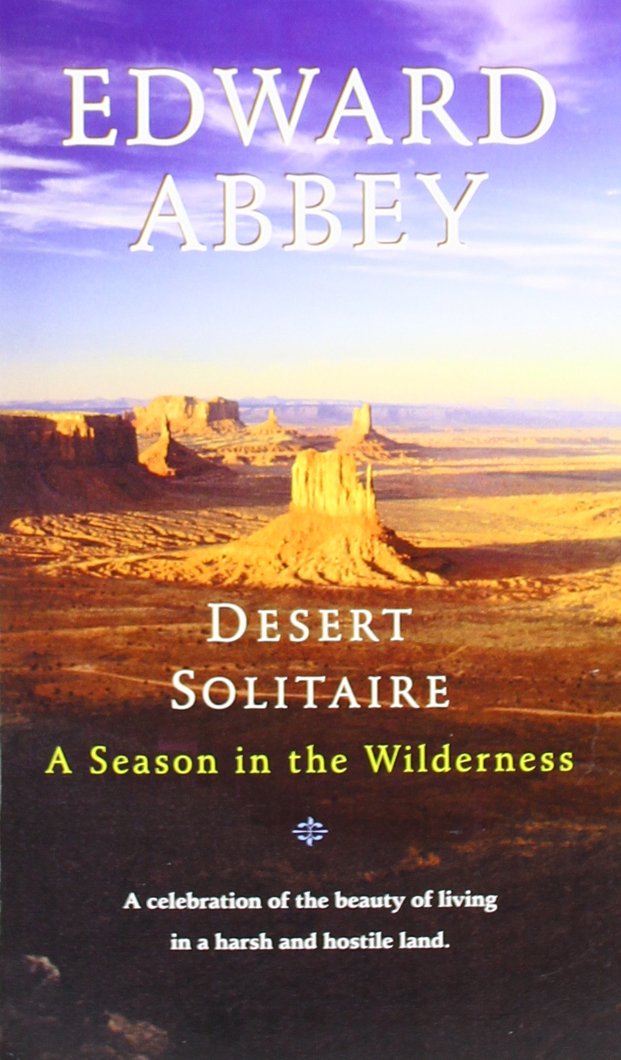
“So I lived alone. The first thing I did was take off my pants. Naturally.”
In Desert Solitaire, Abbey recounts his experiences working as a seasonal park ranger in Utah’s canyon country. The book is the pinnacle of Abbey’s style: brilliant, luminous descriptions of his beloved Western landscapes, mixed heavily with acerbic and cranky observations about man’s destruction of the wild.
Abbey has a remarkable ability to zero in on the heart of a matter, whether musing on the snake inhabitants of his bungalow, deriding the over-development of wilderness — like the nearby Zion National Parkinglot” — or reflecting on the beauty of the desert after rains.
If you’ve already read this classic, read it again. And if not, What’s taken you so long? Get reading.
-
Locust: The Devastating Rise & Mysterious Disappearance of the Insect that Shaped the American Frontier
Jeffrey A. Lockwood
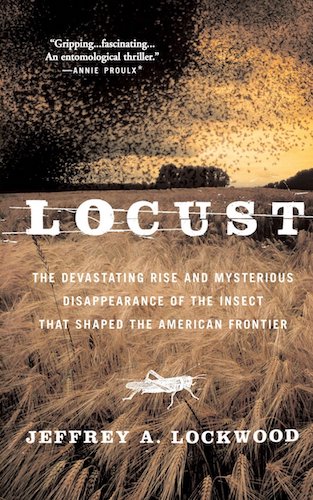
Millions of bison stretching across the plains. Passenger pigeons darkening the skies. These are the North American wildlife spectacles that we remember, we mourn. But what about the great swarms of locusts that devoured everything in their path, destroying livelihoods across the Plains?
Like the bison and passenger pigeons, these swarms have disappeared. But where did they go? Entomologist Jeffrey Lockwood leads us on a scientific journey that at times feels like reading a mystery novel. He uses historic accounts to bring to life Great Plains life in the 1800s, and his own research to track down one of most puzzling wildlife disappearances ever. Over the centuries, people have mainly explained locust swarms through religion, economics and story, but Lockwood brings science. It will transport you to a Great Plains far more complex and intriguing than you ever imagined.




Anything by Sigurd Olson, especially if you like the north woods of the US and Canada. Start with The Singing Wilderness.
How about my Central Asian and eage books, Matt? ( ;-))
Voyage of the Beagle, C. Darwin;
The Malay Archipelago, A. R. Wallace
Water, Ice and Stone by William Green
Classic book about the dry valleys of Antarctica with lyrical writing by a scientist.
The Crystal Desert by David G. Campbell
Another classic book about Antarctica in the same vein as Barry Lopez’s Arctic Dreams.
(I am bipolar in my travels.)
Lyanda Lynn Haupt: “Rare Encounters with Ordinary Birds”
“Pilgrim on the Great Bird Continent”
Linda V. Mapes: “Witness Tree: Seasons of Change with a Century Old Oak”
Great books all. But if you love nature, there is none better than “A Sand County Almanac” by Aldo Leopold. It is always at the top of my list.
A View from Lazy Point, Carl Safina
Arctic Dreams. Barry Lopez
The Lost Grizzlies, Rick Bass
Great list!
My dad used to read to us from Cry of the Kalahari when we were kids, back in the 60’S. I still have the hand-written reply from Peter Matthiessen when I wrote to him of how his book Snow Leopard changed my life in 1980. Abby’s Desert Solitaire is why I went to school in Northern Ariozna and am a Grand Canyon commercial backcountry guide now.
Books change lives.
Would also recommend the awe-enriched Arctic Dreams by Barry Lopez (’86 — National Book Award). Having grown up in the Far North, it is the only book I know of which captures the spirit of vastness of the region; and Annie Dillard’s lyric Pulitzer Prize-winning personal reflections on the natural world, Pilgrim at Tinker Creek (which made me want to propose to her when it came out in 1974).
Please make this list an annual event. Love it (maybe I missed it in previous years).
Thanks,
Lonner Holden
The Allure of Deep Woods: Backpacking the Northville-Placid Trail and Forest Under My Fingernails: Reflections and Encounters on the Long Trail by Walt McLaughlin
Great introspective memoiristic essays
1. A Year in the Maine Woods
by Bernd Heinrich
2. The Parrot Without a Name
by Don Stap
Matt and Justine, thanks for the list. For traveler’s who don’t have time to read because the spend too much time in a car, I highly recommend the audio book of the Snow Leopard (available on audible.com, maybe elsewhere too). It is abridged, but what is lost in the truncated version is more than made up for by the narration done by none other the Peter Matthiesson. Hearing him read his own extraordinary story is hauntingly beautiful.
Barry Lopez — almost anything he has written. Steven Bodie — almost anything. Gretel Ehrlich — almost anything. Gerald Durrell — almost anything. John McPhee — many of his works. All of these are keen and careful observers and skillful and evocative writers. There are many, many more.
I read Locust a few years ago and really enjoyed it. However, I think your list is missing a good one that prompted my imagination when traveling: 1491 by Charles Mann. It may not be the most scientifically rigorous, but dang sure provides a lot of food for thought.